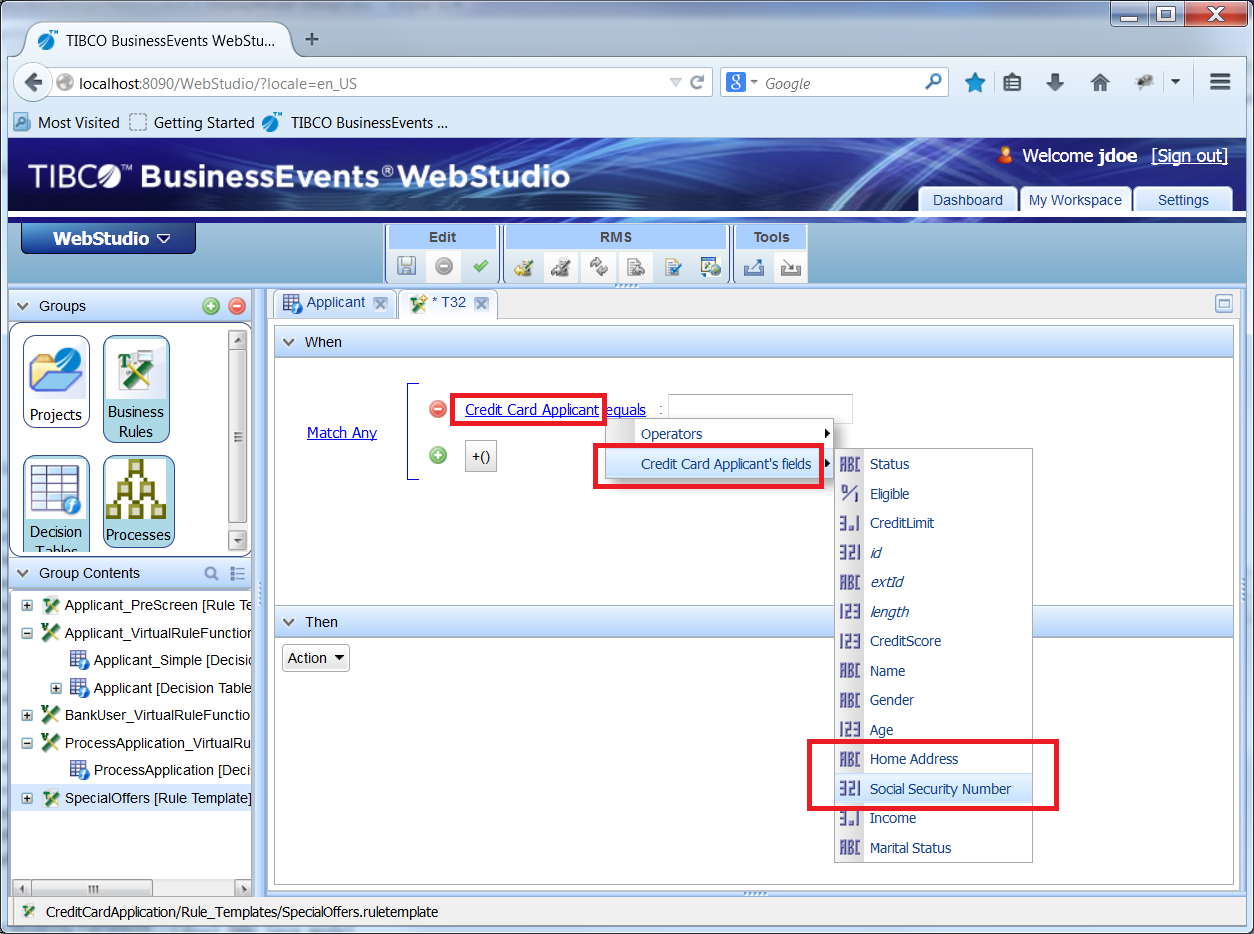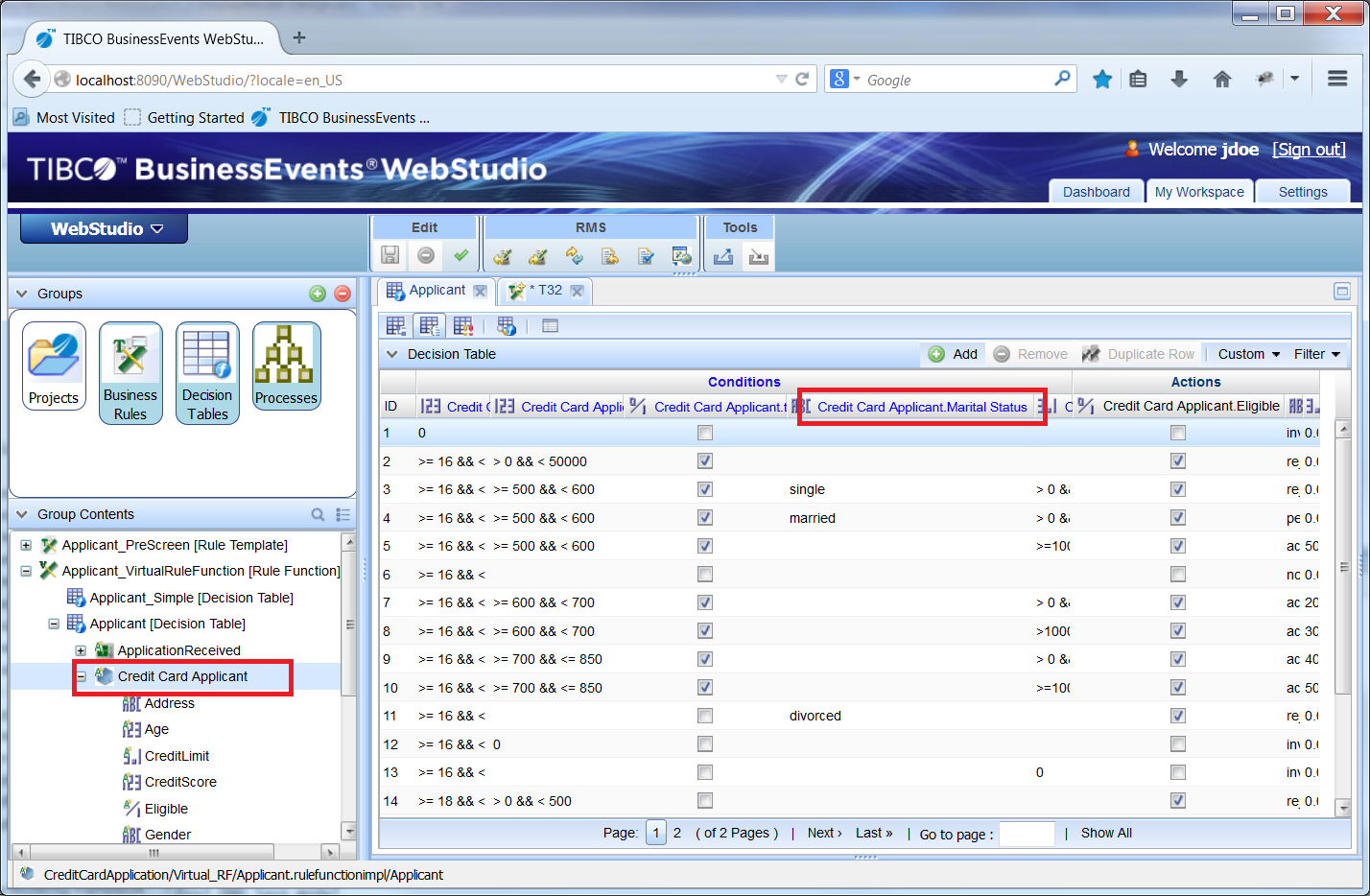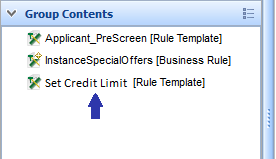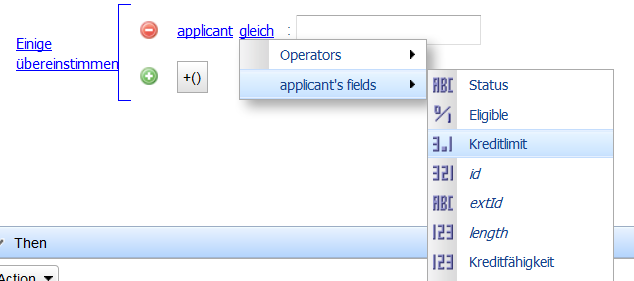Display Models in WebStudio
Using display models, you can display text for the artifact and its properties in a simpler form and your preferred language. You can also hide some properties of the artifact using display models.
In the WebStudio run time, the display text for the properties, which are defined in the display model, are displayed instead of the element name. The display model for the artifact and its properties are created in the TIBCO BusinessEvents Studio. See the TIBCO BusinessEvents Developer's Guide for more details on how to create display models.
Business Rule Editor
In the Business Rule editor, the display text for the fields are displayed instead of their element name. If the property is left unspecified in the display model, the element name is displayed. Also, those properties are displayed for which the hidden check box was not selected.
Group Contents
In the Group Contents section, all the base artifacts, which have display models defined, have their display text displayed instead of the artifact name.
Other Language
When the locale for Webstudio is set to a non-default language in the URL, the display model for that language is loaded in the WebStudio. For example, if the locale is set for German in the WebStudio URL, such as, http://localhost:8090/WebStudio/?locale=de, the display model with the language defined as German is picked up and used.
If the display model with the language and country does not match any language packs, only the display model for that language is loaded in the WebStudio. The default language 'en_US' will be picked up for WebStudio display.




